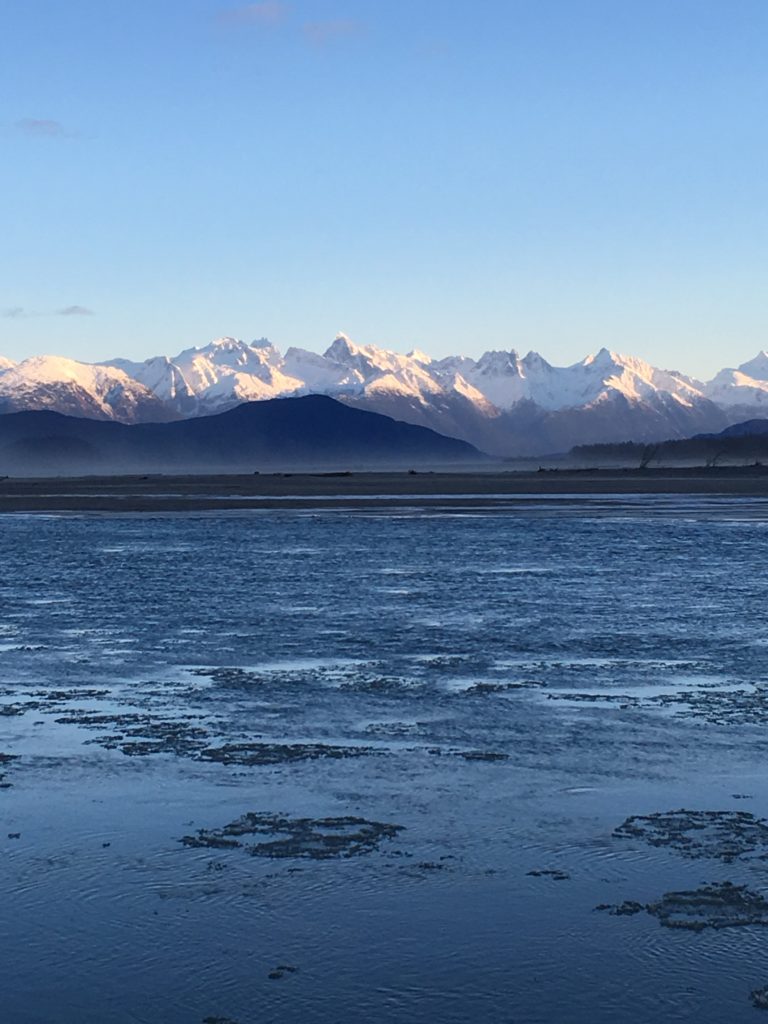
Four Alaska communities from Haines to Bristol Bay have applied for high-level water body protections. The Outstanding National Resource Water, also known as Tier 3, nominations have been in limbo for a few years. That’s because the state is still figuring out what evaluation process to use. A series of public meetings in March aim to gather input on that question.
Last year, Outstanding Resource protection was one of the most hotly-debated topics in Haines.
“Why classify something, have another law that is stuffed down our throats?” Haines resident Don Hess asked at a meeting hosted by Michelle Hale, from the state Department of Environmental Conservation.
Hale held a meeting in Haines after news of an Outstanding Resource nomination for the Chilkat River sparked a lot of questions from the community.
The Chilkat Indian Village of Klukwan nominated the river for special protection. Jones Hotch Jr. was tribal council president at the time. He said plummeting salmon returns in the river motivated the village.
“I believe this is like a shot across our bow,” Hotch said. “Like a warning to us, a signal, that we should do something.”
But many in the area are worried about the restrictions that come with the water protection. A Canadian company is in the midst of mineral exploration for a potential mine near the river.
“Even though this is a technical subject matter, it does have some significant impacts to communities as well as land,” Earl Crapps with DEC said. “And so that’s the reason I think that there’s been some significant interest in the subject.”
Outstanding Resource designation is the highest water protection available under federal law. It prohibits activity that would degrade water quality, unless the impact is limited and temporary. States are federally-mandated to have a process to consider nominations. Alaska does not have such a process yet.
DEC worked with Gov. Bill Walker to introduce legislation during last year’s session. The bills would have given power to lawmakers to evaluate and decide on Outstanding Resource nominations.
But there was significant opposition to that proposal. Some said it would ‘politicize’ water protection decisions. So, in April, Walker withdrew the bills. He explained his decision to KHNS at the time.
“We thought we were creating a more public process. Obviously either we weren’t or a lot of folks thought we weren’t doing it the correct way,” Walker said. “So we said, ‘well, let’s push the reset button and start this process over again.’”
DEC is starting the process over again by holding a series of public meetings.
They are March 20 in Juneau, March 21 in Anchorage and March 22 in Fairbanks. There is also a statewide teleconference set for March 23.
To be clear, these meetings are not to debate the merits of whether the Chilkat River, Koktuli River, Chandalar River, or Yakutat Forelands should be granted higher protection. It’s to talk about what process the state should use to evaluate the nominations. Crapps says there are three main options proposed.
The first is what DEC suggested last year – giving decision-making power to the state legislature.
“The second would be a board approach where a board is formed to vet and make the decision on the nominations,” Crapps said. “And the third would be the authority rests with the DEC to make the decision on the nominations.”
DEC is also gathering feedback through a new ‘Tier 3 Outreach’ website.
Crapps said these public meetings mean the four pending Alaska Outstanding Resource nominations will likely have to wait at least another year for the state to figure out its evaluation process.
Emily Files is a reporter at KHNS in Haines.




